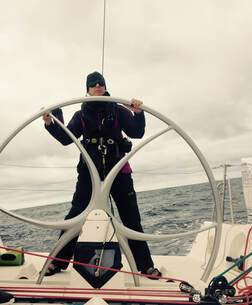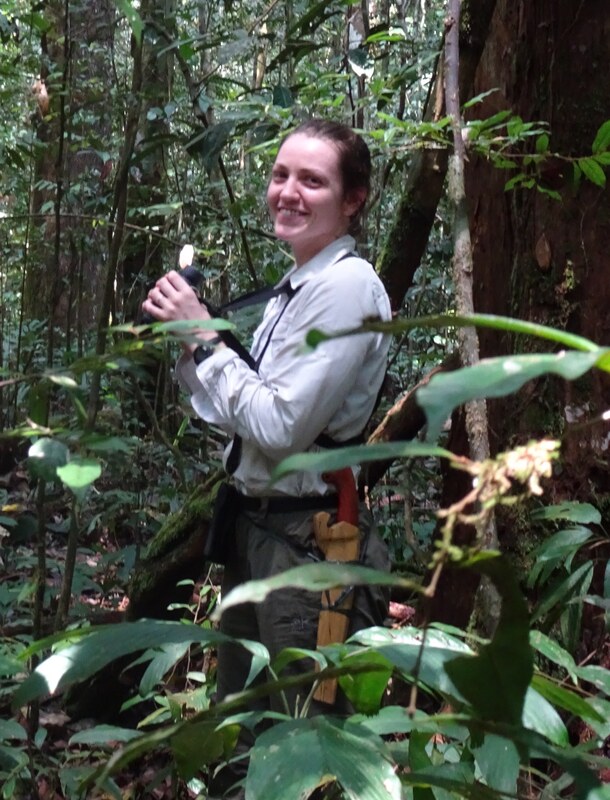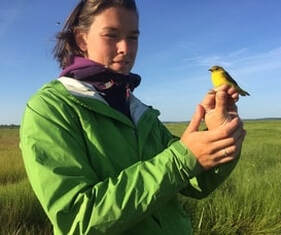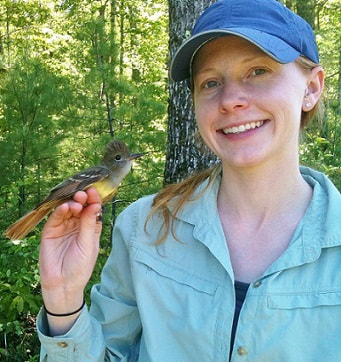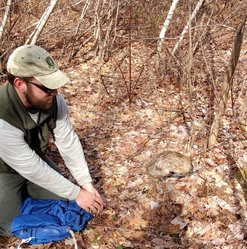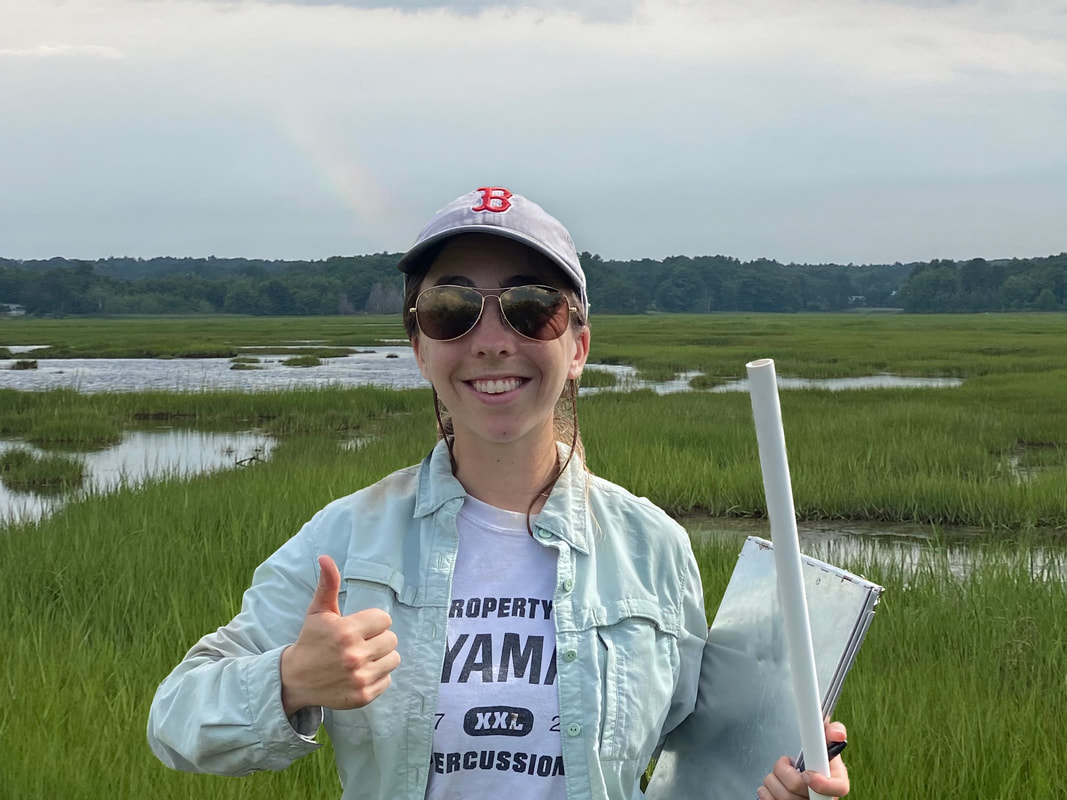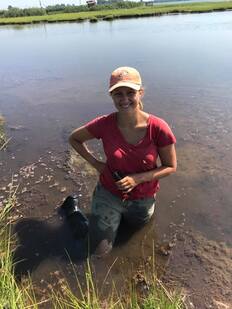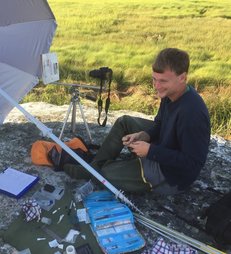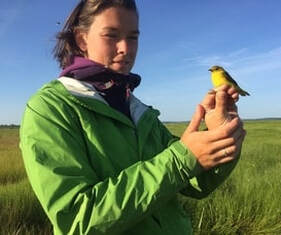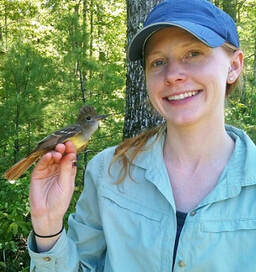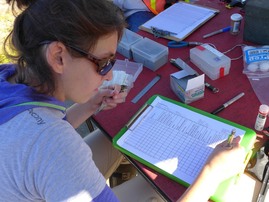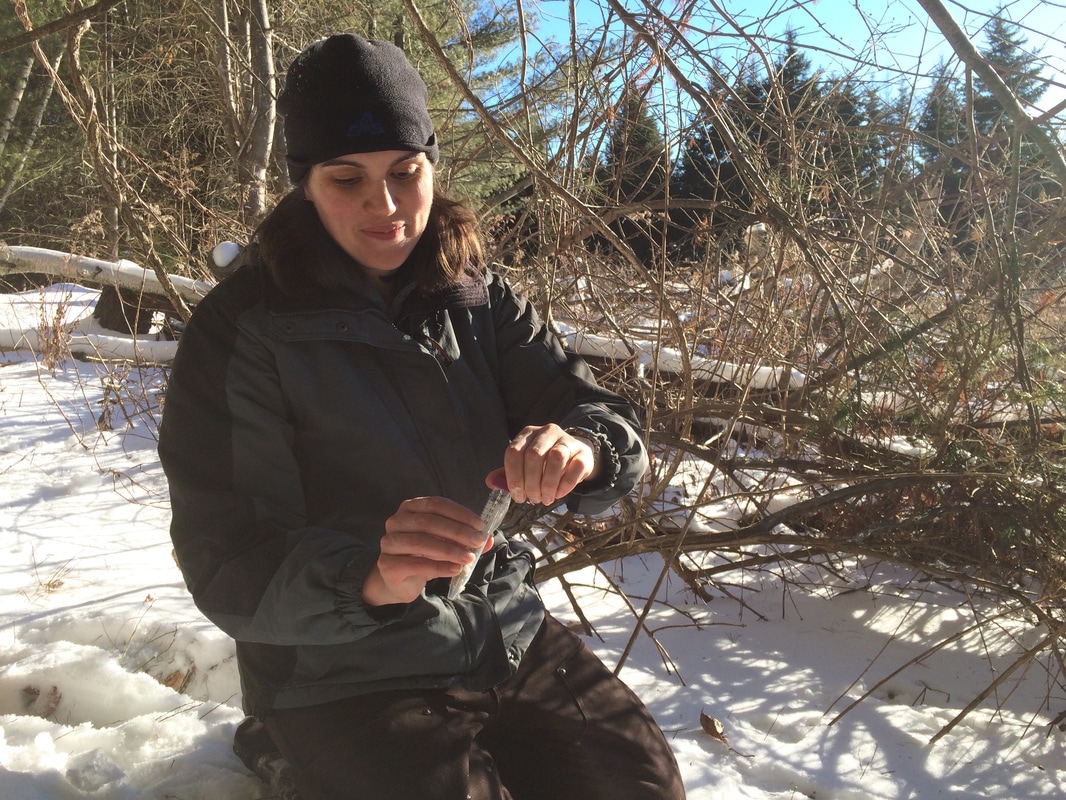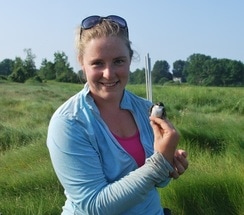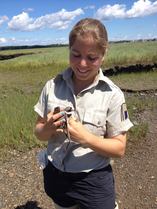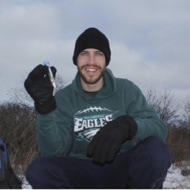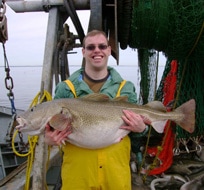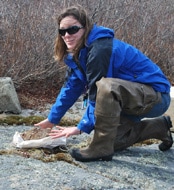|
Adrienne Kovach, Associate Professor akovach@unh.edu My research focuses on the conservation of species of concern in the Northeast. My work is multidisciplinary and I integrate genetic and genomic tools with population modeling and the collection of ecological and behavioral data. I work with a diversity of vertebrates, including black bears, New England cottontails, tidal marsh and shrubland birds, anadromous fish, and Atlantic cod. I encourage my students to incorporate field, laboratory, and quantitative approaches in their research. |
|
Lindsey Fenderson, Postdoctoral Researcher Lindsey.Fenderson@unh.edu My research interests are to inform conservation practice by integrating genomic and GIS-based spatiotemporal tools to understand population responses to climate and anthropogenic change through time. In this position, I am working to develop genomic resources for 6 northeastern sparrow species (with different levels of tidal marsh specialization) to facilitate our research linking genomes to phenomes. I will be comparing genomic variation and architecture across these species to elucidate key genomic features related to adaptation to harsh tidal marsh environments and apply these data to conservation monitoring of Ammospiza sparrows. |
|
Amy Scott, Postdoctoral Researcher
Amy.Scott@unh.edu My research focuses on behavioral ecology and genetics with the end goal of informing conservation. In my current postdoc position, I am implementing techniques to enrich DNA from non-invasive samples to enable the use of genomic tools for monitoring the vulnerable New England cottontail rabbit. My dissertation research used non-invasive genetic paternity analysis, behavioral data, ecological measures, and long-term association data from the endangered Bornean orangutans to investigate the interaction between male and female reproductive strategies in determining reproductive outcomes. I am broadly interested in ecology, evolution, and conservation. My research uses a combination fieldwork, genetics laboratory work, and quantitative analysis. |
|
Logan Maxwell, Research Scientist/Lab Manager logan.maxwell@unh.edu My research interests lie in integrating genomic and ecological data to study wildlife population dynamics and evolutionary ecology, all while working within a broader conservation management framework. As a lab manager, I help to make sure the lab runs smoothly, and contribute to many ongoing projects within the lab – including analyses of gene flow, genomic adaptation, and ecological/evolutionary genomics. |
|
Melissa Bauer, PhD in Natural Resources & Environ. Studies
mle1003@wildcats.unh.edu I am interested in using quantitative and molecular tools to understand the impacts of habitat loss and fragmentation on wildlife populations. I focus on the New England cottontail, which has experienced extensive loss of population connectivity due to fragmentation of shrubland habitat. To assess cottontail response to restoration, I am using spatially explicit genetic capture-recapture models to estimate cottontail density on managed patches and to obtain population estimates. I am also using landscape-specific models to predict cottontail population response to future habitat restoration and augmentation scenarios to assess population viability and identify strategies to improve connectivity and persistence. I am further using landscape genetic tools to better understand the effect of landscape features on cottontail dispersal and connectivity in different portions of the cottontail’s range. |
|
Brett Ferry, Masters in Wildlife Brett.Ferry@wildlife.nh.gov My research involves a population viability analysis for the New England Cottontail in southern NH. To accomplish this, I am live trapping and radio collaring rabbits to track survival and dispersal. I am also conducting pellet surveys in the winter for DNA analysis. which will be used for patch population estimates and gaining additional dispersal information. This project is a collaboration between NH Fish and Game and UNH. The results will be used for furthering the management and conservation of this state endangered species. |
|
Talia Kuras, Masters in Wildlife tmkuras@gmail.com My research interests lie at the intersection of wildlife behavior, genetics, and conservation. My research focuses on patterns in paternity in Saltmarsh sparrows. Little is known about mate selection in this species, which has a mating system that lacks pair bonds or territoriality, resulting in broods of mixed paternity. Through my research, I intend to investigate spatial, temporal, and genetic factors which may influence paternity in this species. |
|
Jonathan Clark, PhD in Earth and Environmental Sciences
jdc1068@wildcats.unh.edu I am interested in using genomic tools to examine how ecological forces drive adaptive evolution at the population and species levels, particularly regarding local adaptation and the evolution of species to extreme environments. My dissertation research is focused on the parallel evolution of coastal sparrow species in eastern North America. I aim to extensively investigate the genome-phenome-environment relationships within and between sparrow species adapted to tidal saltmarshes using whole-genome data. |
|
Emily Patterson, Masters in Wildlife
patterson.c.emily@gmail.com My research interests combine collecting field data and using genetic tools to answer questions about bird behavior, with a goal of contributing to conservation. For my Masters, I am studying the breeding behavior and timing of two tidal marsh birds: Saltmarsh and Nelson’s Sparrows. Due to the cyclic nature of spring tides, these sparrows have a 26-day window in which they must incubate and fledge young. I am looking at circadian rhythm genes in both species to better understand the timing of nest cycles between the two species and their levels of adaptation to the tidal marsh ecosystem. In addition, I am comparing the nest attentiveness of the two species across their ranges and at different times during the breeding season. |
|
Kris Wojtusik, Research Scientist kjwojtusik@wildcats.unh.edu I am in interested in using molecular techniques to inform the conservation and management of exploited species. My research focuses on characterizing the population genetic structure of striped bass (Morone saxatilis) within their migratory range and also conducting mixed stock analyses in coastal waters of the Northeast. Striped bass are a long-lived, anadromous teleost that are the target of one of the most popular recreational fisheries in the US, whose populations are currently in decline. It is the hope that the data we generate are incorporated into the current management plans for striped bass. |
Former Graduate Students & Postdocs
|
Gemma Clucas
Cornell University gemma.clucas@cornell.edu |
Logan Maxwell, MS 2018
University of New Hampshire logan.maxwell@unh.edu |
|
Recent Undergraduate Alumns
Brighid Lamprey 2022 - Population Structure in Prairie Warblers
Alexa Aubrey 2022 - Population Structure in Prairie Warblers
Isabella Collamati 2021 - Effects of Aging on the Reproductive Success of the Saltmarsh Sparrow
Julia Squillace 2020 - Epigenetics of tidal marsh sparrow nesting phenotypes
Jenna O'Del 2019 - Small mammal abundance in New England cottontail breeding pen
Allison Stefanelli 2019 - Small mammal abundance in New England cottontail breeding pen
Stephanie Copeland 2018 - Population structure & dispersal of the scrubland specialist prairie warbler
Troy LaPolice 2018 - Apprenticeship in interdisciplinary research - conservation ecology & genetics
Sarah Clements 2016 - Genetic structure of an isolated New England cottontail population
Denyelle Surrell 2016 - Nesting adaptations of Saltmarsh and Nelson's Sparrows
Christina Dimeo 2015 - Apprenticeship in Conservation Genetics
Tricia Gunther 2015 - Evaluation genetic diversity between species and populations of cottontails
Stephanie Royka 2014 - Landscape effects on host populations of black-legged ticks
Peter Goode 2014 - Wild anadromous blueback herring and alewives hybridize in a tank-spawning environment
Olivia Foy 2014 - Developing a method for DNA extraction and amplification from archaeological cod bone
Emily McDermott 2014 - Influence of Habitat and Landscape Features on Sex Ratio of New England Cottontails
Elizabeth Natola 2012 - Demographic history of New England cottontail
Evan Ehrlich 2012 - Analysis of Behavior and Song in Hybrid Male Saltmarsh x Nelson’s Sparrows
Molly Hunt 2012 - Analysis of Behavior and Song in Hybrid Male Saltmarsh x Nelson’s Sparrows
Alexa Aubrey 2022 - Population Structure in Prairie Warblers
Isabella Collamati 2021 - Effects of Aging on the Reproductive Success of the Saltmarsh Sparrow
Julia Squillace 2020 - Epigenetics of tidal marsh sparrow nesting phenotypes
Jenna O'Del 2019 - Small mammal abundance in New England cottontail breeding pen
Allison Stefanelli 2019 - Small mammal abundance in New England cottontail breeding pen
Stephanie Copeland 2018 - Population structure & dispersal of the scrubland specialist prairie warbler
Troy LaPolice 2018 - Apprenticeship in interdisciplinary research - conservation ecology & genetics
Sarah Clements 2016 - Genetic structure of an isolated New England cottontail population
Denyelle Surrell 2016 - Nesting adaptations of Saltmarsh and Nelson's Sparrows
Christina Dimeo 2015 - Apprenticeship in Conservation Genetics
Tricia Gunther 2015 - Evaluation genetic diversity between species and populations of cottontails
Stephanie Royka 2014 - Landscape effects on host populations of black-legged ticks
Peter Goode 2014 - Wild anadromous blueback herring and alewives hybridize in a tank-spawning environment
Olivia Foy 2014 - Developing a method for DNA extraction and amplification from archaeological cod bone
Emily McDermott 2014 - Influence of Habitat and Landscape Features on Sex Ratio of New England Cottontails
Elizabeth Natola 2012 - Demographic history of New England cottontail
Evan Ehrlich 2012 - Analysis of Behavior and Song in Hybrid Male Saltmarsh x Nelson’s Sparrows
Molly Hunt 2012 - Analysis of Behavior and Song in Hybrid Male Saltmarsh x Nelson’s Sparrows

